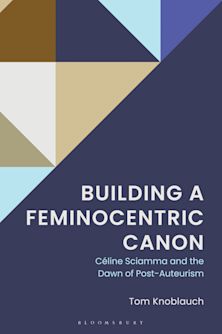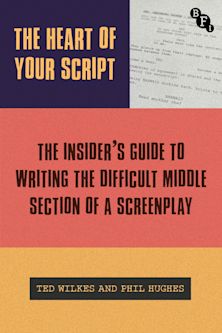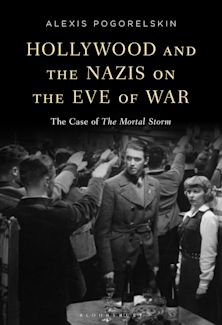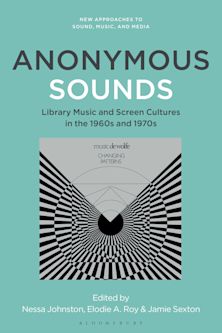- Home
- ACADEMIC
- Film & Media
- Film and Media Production
- The Language of Film
The Language of Film
- Delivery and returns info
-
Free US delivery on orders $35 or over
You must sign in to add this item to your wishlist. Please sign in or create an account
Description
An effective filmmaker needs to have a good understanding of how film language works, and more importantly, how to actively influence an audience's thoughts and feelings and guide their gaze around the screen.
Packed with examples from classic and contemporary cinema, The Language of Film reveals the essential building blocks of film and explains how the screen communicates meaning to its audience. You will learn about fundamental theories and concepts, including film semiotics, narrative structures, ideology, and genre, as well as how elements such as shot size, camera movement, editing technique, and color come together to create the cinematic image.
With insightful case studies and discussion questions, dozens of practical tips and exercises, and a new chapter on film sound, this new edition of The Language of Film is a must-have guide for aspiring filmmakers.
Table of Contents
Chapter 1: Semiotics: Images; The Visual Mind; Reading the Signs; Making Meaning; Codes and Filters; Case Study: Seven; Chapter Summary
Chapter 2: Narrative: Theories of Storytelling; Structuralism; Theories of Structure; Genette's Narrative; Discourse; Music; Short Film and Narrative; Case Study: The Secret Life of Walter Mitty; Chapter Summary
Chapter 3: Intertextuality: Text; Quotation; Allusion; Cult Film; Genre; Case Study: Citizen Kane; Chapter Summary
Chapter 4: Ideology: Ideological Analysis; Realism; Ideology and Genre; Case Study: Dead Man's Shoes; Chapter Summary
Chapter 5: Frames and Images: The Shot; Distance, Height and Framing; Shot Distances; Mise en Scène; The Mobile Camera Frame; Time and the Long Take; Case Study: Hero; Chapter Summary
Chapter 6: Sound: Film: An Audiovisual Medium; Sound Properties; Diegetic and Non-diegetic Sound; Offscreen Space and Audio; The Voice; Music; Case Study: Berberian Sound Studio; Chapter Summary
Chapter 7: Constructing Meaning: Continuity Editing; Discontinuity Editing; Montage; Pacing; Case Study: Psycho; Chapter Summary
Conclusion; Film Language Glossary; Index; Acknowledgements and Credits
Product details

| Published | Oct 22 2015 |
|---|---|
| Format | Paperback |
| Edition | 2nd |
| Extent | 216 |
| ISBN | 9781472575241 |
| Imprint | Bloomsbury Academic |
| Illustrations | 75 colour illus |
| Dimensions | 9 x 6 inches |
| Series | Basics Filmmaking |
| Publisher | Bloomsbury Publishing |
About the contributors
Reviews
-
The Language of Film is both a passionate and instructive book that illuminates the reader with the pleasures associated with the discovery of film theory, history and aesthetics. The essence of the book will awaken the desire to transform an understanding of these primary film elements into practice.
Richard Litvin, Undergraduate Film & TV, Tisch School of the Arts, New York University, USA
-
This exploratory reading is notably succinct, informative and moreover, digestible from a beginner's perspective.
Adrian Beasley, London Metropolitan University, UK
-
I like the idea of having a text for this class that isn't just about the technical aspects of what a camera is and how to use it; and I really appreciate the easy to read layout and and small bites of information.
Christine Dehne , Manhattanville, USA
-
An excellent book - relevant and interesting. Written in a clear manner. The case studies make the reading more enjoyable. Great style, clear format - very well presented.
Donna Stephens, Plymouth College of Art, UK
-
An extremely enjoyable and engaging read ... For novice film-makers complex theory is made accessible in bite-sized pieces, supported by interesting case studies and 'asides' of film fact/history.
Elaine Drainville, University of Sunderland, UK
-
This book provides the perfect blend between linguistic theory and visual entertainment. With its multitude of examples this edition presents core aspects of film analysis in an engaging and fun way.
Sonja Molnar, University of Salzburg, Austria



































